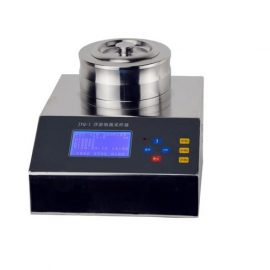Cell-Penetrating Peptides for Enhanced Drug Delivery Systems
# Cell-Penetrating Peptides for Enhanced Drug Delivery Systems
## Introduction to Cell-Penetrating Peptides (CPPs)
Cell-penetrating peptides (CPPs) have emerged as a revolutionary tool in modern drug delivery systems. These short peptides, typically consisting of 5-30 amino acids, possess the remarkable ability to cross cellular membranes and transport various cargo molecules into cells. Their discovery has opened new possibilities for overcoming one of the biggest challenges in drug development – the efficient delivery of therapeutic agents across biological barriers.
The Mechanism of CPP-Mediated Drug Delivery
The exact mechanisms by which CPPs facilitate cellular uptake are still being investigated, but several pathways have been identified:
- Direct translocation: Some CPPs can directly penetrate the lipid bilayer through energy-independent processes
- Endocytosis: Many CPPs enter cells via various endocytic pathways, including clathrin-mediated endocytosis and macropinocytosis
- Transient membrane disruption: Certain CPPs can temporarily disrupt membrane integrity to facilitate cargo entry
Advantages of Using CPPs in Drug Delivery
CPPs offer several significant advantages over traditional drug delivery methods:
- Enhanced cellular uptake: They dramatically improve the intracellular delivery of various therapeutic agents
- Versatility: CPPs can transport diverse cargoes including small molecules, proteins, nucleic acids, and nanoparticles
- Reduced toxicity: Many CPPs show minimal cytotoxicity at effective concentrations
- Potential for targeted delivery: CPPs can be modified to achieve tissue or cell-specific targeting
Current Applications of CPP-Based Drug Delivery
CPP technology is being explored for numerous therapeutic applications:
| Application Area | Example |
|---|---|
| Cancer Therapy | Delivery of chemotherapeutic agents and tumor suppressor proteins |
| Neurological Disorders | Transport of neuroprotective compounds across the blood-brain barrier |
| Gene Therapy | Delivery of siRNA, miRNA, and plasmid DNA |
| Antimicrobial Therapy | Enhanced delivery of antibiotics and antimicrobial peptides |
Challenges and Future Perspectives
Despite their promise, CPP-based delivery systems face several challenges:
Stability issues: CPPs may be susceptible to proteolytic degradation in vivo. Researchers are addressing this through structural modifications and the use of non-natural amino acids.
Lack of specificity: Many CPPs enter all cell types indiscriminately. Current efforts focus on developing activatable CPPs that only become internalized in target tissues.
Immunogenicity: Some CPP sequences may trigger immune responses, requiring careful design and testing.
The future of CPP technology looks promising, with ongoing research exploring novel CPP sequences, improved conjugation strategies, and combination approaches with other delivery platforms. As our understanding of CPP mechanisms improves, we can expect to see more CPP-based therapeutics progressing through clinical trials and reaching patients.


